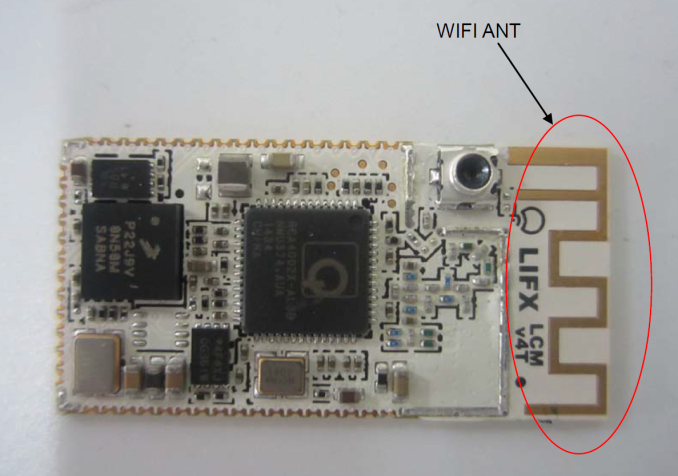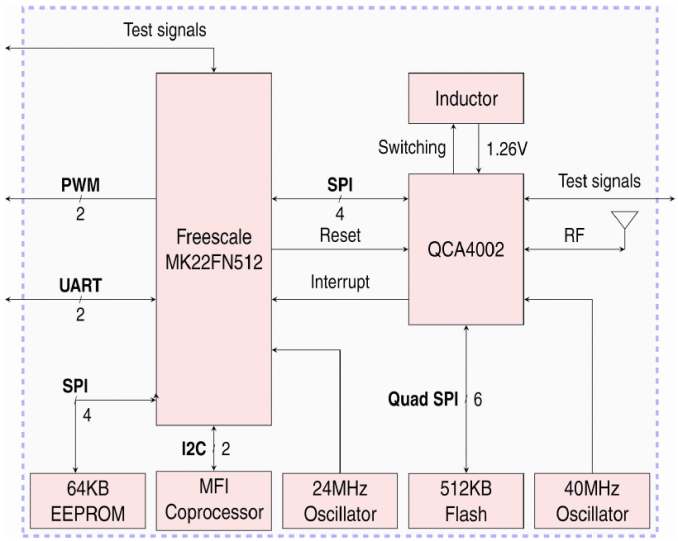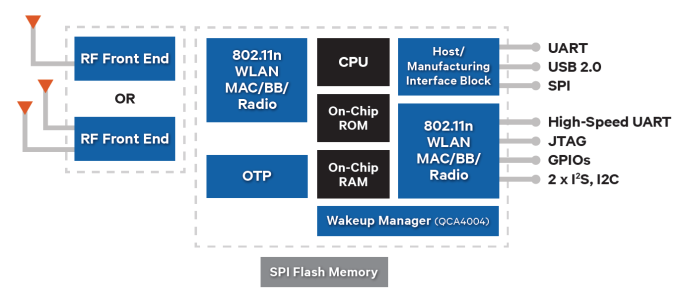LIFX White 800 Smart Bulb Review
by Ganesh T S on June 12, 2015 9:55 AM EST- Posted in
- Home Automation
- Wi-Fi
- Qualcomm Atheros
- LIFX

Introduction and Component Analysis
The Internet of Things (IoT) revolution has sparked an increased interest in home automation. Lighting is one of the major home automation aspects. LIFX is one of the popular crowdfunded companies in this space to have come out with a successful product. The success of their multi-colored LED bulbs brought venture capital funding, allowing them to introduce a new product in their lineup - the White 800. The launch of the White 800 also coincided with firmware v2.00 for the LIFX bulbs.
The initial products from LIFX were multi-color LED bulbs similar to the Philips Hue. The new LIFX White 800 is a white LED bulb with tunable color temperature. Color temperature is an important aspect in the lighting environment. In addition to visual comfort, it also affects human behavioral aspects. Different color temperatures are desirable for different human activities. Therefore, tunable color temperature in a single light bulb is a good thing to have. The specifications of the White 800 indicate 890 lumens of brightness (60W-equivalent), 25000 hours lifetime (22.8 years @ 3 hrs/day), 11 W power consumption and tunable color temperature from 2700K to 6500K.
The first generation LIFX bulbs relied on Broadcom's WICED platform. It also had a TI chip for 802.15.4 mesh networking. However, the White 800 gets rid of the mesh networking aspect and uses the QCA 4002 low-power Wi-Fi platform. This enables a lower price point for the White 800 compared to the other bulbs in the LIFX lineup.
At the heart of the unit is the lighting control module (LCM). LIFX also seems to be targeting this board towards OEMs in addition to using it within the White 800.
LIFX Lighting Control Module (FCC filing)
THe LCM documentation gives more insight into the internal components of the board.
The unit uses a Freescale Kinetis micrcontroller (ARM Cortex-M4-based) coupled with the Qualcomm Atheros QCA 4002. The QCA 4002 is very similar to the AR9330 used in the Ubiquiti mFi devices. The integrated CPU is MIPS-based. It is tuned for low power operation and, correspondingly, lower host CPU performance. The AR933x can run full Linux, but the QCA 400x is targeted towards embedded platforms. In the LIFX, the configuration (QCA 4002) is a 1x1 802.11n 2.4 GHz connectivity platform with the RF switches integrated.
The use of the QCA 4002 software stack on the Kinetis microcontroller allows for AllSeen / AllJoyn certification (the IoT standard backed by Qualcomm). The LIFX White 800 also carries the 'works with nest' logo, thanks to the cloud back-end.
We have looked at the internal hardware in the LIFX White 800. In the next section, we look at what the average consumer sees - the setup and usage process.













55 Comments
View All Comments
sor - Friday, June 12, 2015 - link
What sort of capacitors does this have? The common problem with LED bulbs today is that the caps will die long before the 22 year rating of the LEDs. The heat of the bulb evaporates the electrolyte and shortens the life of already mediocre caps. I'd give most LED bulbs a 5-10 year rating, personally based on this.sor - Friday, June 12, 2015 - link
I also don't get the wifi-switched bulbs. It seems cool on the face, until you realize that you have to train yourself and family to pull out their phones instead of flipping the light switch, which is now a useless switch.fluxtatic - Saturday, June 13, 2015 - link
I didn't get any LED bulbs until I found them for $5 a pop. Even $7.99 was more than I'd pay, given how cheap decent CFLs are. And the power savings over CFLs isn't really all that fantastic, either.All that said, $40 apiece for these strikes me as absolutely ludicrous. Apparently not everyone feels that way, and spend your money the way you want, I suppose. Maybe I'm getting old, but this is definitely over in "get off my lawn" territory for me.
Pork@III - Saturday, June 13, 2015 - link
$40 for lighbulb too expensive. In my country have normal bulbs 30¢ per one.Wombat2013 - Saturday, June 13, 2015 - link
An interesting post from OpenDNS about IoT vulnerabilities (from an enterprise perspective, but still of interest to individuals):https://blog.opendns.com/2015/06/02/opendns-enterp...
Solandri - Saturday, June 13, 2015 - link
Actually, it sounds like we need a new electrical standard. Kinda like the converse of PoE where you send power along cabling initially intended for network signals.A low bandwidth (so as to not cause widespread high-frequency interference) powerline ethernet standard should allow you to plug in "smart" bulbs into a home's standard electrical sockets, and have them controlled via a central control station which communicates with the bulbs over powerline ethernet. Only the control station would need wifi connectivity so you could control it. The individual bulbs would only need to receive instructions next time they were turned on and announced themselves to the control station, thus eliminating the always-on power draw of putting a wifi receiver onto every light bulb.
sor - Sunday, June 14, 2015 - link
There are actually quite a few power line network solutions. Most of them are one to one though, like a bridge between rooms. The issue is that home power is one big bus, so you'd be dealing with a lot of collisions. You'd also have to get people to buy an extra device that is the power line equivalent to the WiFi router they already have. I don't think it would save on cost, either.sor - Sunday, June 14, 2015 - link
I have some arduino projects with 2.4GHz radios that have lasted over a year so far on a 3v coin cell. They modulate between on/off to achieve that, but the point is that the radio, even powered, only pulls a few mA. You can also put the radio into sleep mode where it is not fully powered but can still receive messages and can send an interrupt to your microcontroller to wake it up when there is data in the radio buffer. That's how you get good battery life, your CPU only wakes up for a few ms to process messages when necessary and goes back to sleep.Their power draw might be due to parasitic power supply losses, like wall wart power adaptors, and the logic chip itself, perhaps combined with laziness in always powering the CPU/radio because they aren't on battery.
badkat7 - Sunday, June 14, 2015 - link
While examining the light, did the author take a look at the power supply / drive circuitry? The reason I ask is because I've just completed a study of CFL light failures which causes me to question the claims of manufacturers for life expectancies of 22,500 hours (or similar claims) for LEDs.In my analysis of CFLs from two major manufacturers (over 100 lights) I discovered that over 90% of CFLs quit due to circuit board failures rather than the CFL element. The root cause down-rated components (especially the transistors) and electrolytic capacitor failure. In particular, thermal probes indicated the electronics were running in ambient temperatures of almost 80 deg C. Looking back at earlier CFL drivers I noted they used beefier transistors (or FETs) and higher voltage capacitors. Regardless, the figures quoted by manufacturers are completely unobtainable. Looking at component manufacturer's charts, the average life of a CFL should be rated at between 800 and 2000 hours with the higher power units (100W) rated at the lower limit.
Incidentally I also discovered the thermal fuse incorporated into all LED lights never comes into play (and if it did would most likely start a fire)!
My concern, therefore, is that LED lights may have the same issue - the LEDs may far outlast the drive circuitry associated with them. Perhaps the author of this article, in future reviews of (expensive) LED lights might wish to examine this aspect of their performance?
badkat7 - Sunday, June 14, 2015 - link
Apologies for typo. Meant to say "The root cause WAS down-rated components"